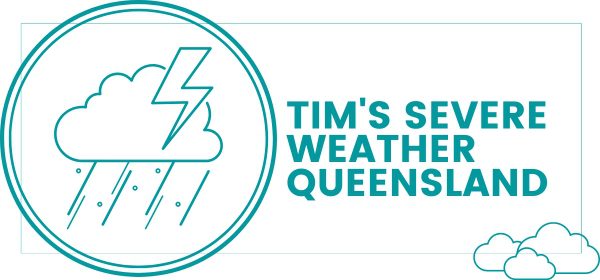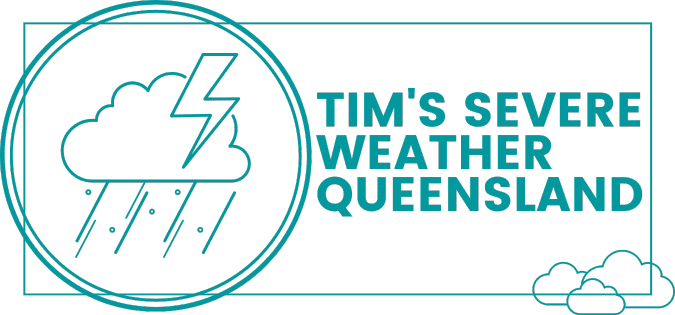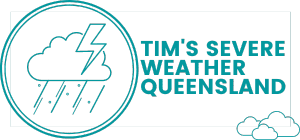Courtesy Of The Weather Chaser
AWS, Rain & River Gauge Observations Maps
Explore AWS, rain gauge, and river gauge observation maps for Queensland and New South Wales. Discover real-time data on weather conditions.
Automatic Weather Stations, Rain gauges, and river level observations play a crucial role in understanding and predicting weather patterns, especially in regions prone to severe weather events like Queensland and New South Wales.
These observations are essential for various sectors, including agriculture, emergency services, and infrastructure planning. In this article, we’ll delve into the significance of AWS, rain gauges, and river gauges, and how their observations are used to create maps for monitoring and forecasting weather conditions.
Importance of AWS, Rain Gauges & River Gauges
Automatic Weather Stations (AWS):
Automatic Weather Stations (AWS) play a crucial role in providing real-time weather data. These stations are equipped with sensors that measure various meteorological parameters such as temperature, humidity, wind speed, and wind direction.
The data collected by AWS is used for weather forecasting, monitoring climate trends, and assessing environmental conditions. AWS helps in improving the accuracy of weather predictions and provides valuable information for a wide range of applications, including agriculture, aviation, and disaster management.
Rain Gauges:
Rain gauges are essential instruments used to measure the amount of precipitation that falls at a specific location over a certain period. They help in monitoring rainfall patterns, which is critical for various sectors such as agriculture, water resource management, and flood forecasting. Rain gauges provide valuable data for assessing drought conditions, managing water resources, and understanding the impact of climate change on precipitation patterns.
River Gauges:
River gauges, also known as stream gauges, are used to monitor water levels in rivers and streams. These gauges help in assessing the flow of water, which is crucial for flood forecasting, water resource management, and navigation. River gauges provide real-time data on water levels, which is essential for making informed decisions about flood control measures, irrigation, and water supply management. River gauges also help in monitoring the impact of weather events such as heavy rainfall and snowmelt on river levels.
Real-time Weather Data:
AWS, rain gauges, and river gauges contribute to creating real-time weather maps by providing continuous and up-to-date information on weather conditions. This data is used to generate maps that show current weather patterns, including temperature, precipitation, and wind speed. Real-time weather maps are essential for monitoring changing weather conditions and predicting severe weather events.
Monitoring Extreme Weather Events:
The observations from AWS, rain gauges, and river gauges are crucial for monitoring and predicting extreme weather events such as floods and droughts.
These observations help in assessing the severity of weather events, predicting their impact, and issuing timely warnings to the public. By monitoring extreme weather events, authorities can take proactive measures to mitigate risks and protect lives and property.
Integration with GIS:
AWS, rain, and river gauge data can be integrated with Geographic Information Systems (GIS) for better visualization and analysis. GIS technology allows for the mapping and analysis of weather data, which helps in identifying patterns and trends.
By integrating AWS, rain, and river gauge data with GIS, authorities can make informed decisions about land use planning, disaster management, and infrastructure development.
Benefits for Various Sectors
Agriculture:
AWS, rain gauges, and river gauges provide valuable data for the agriculture sector. Farmers can use this data to plan irrigation schedules, monitor soil moisture levels, and assess crop health. By using real-time weather data, farmers can make informed decisions about planting, harvesting, and pest control, leading to increased crop yields and reduced losses.
Emergency Services:
AWS, rain gauges, and river gauges play a crucial role in emergency response and preparedness. Real-time weather data helps emergency services agencies to anticipate and respond to weather-related disasters such as floods, storms, and wildfires. By monitoring weather conditions, emergency services can issue timely warnings, evacuate affected areas, and mobilize resources to respond to emergencies effectively.
Infrastructure Planning:
AWS, rain gauges, and river gauges aid in infrastructure planning by providing data on weather patterns and water levels. This data is essential for designing and constructing infrastructure that can withstand extreme weather events such as floods and droughts.
By using real-time weather data, planners and engineers can mitigate the risks associated with severe weather and ensure the resilience of infrastructure projects.
FAQ
1. What is the role of AWS in weather monitoring?
AWS plays a crucial role in providing real-time weather data, including temperature, humidity, wind speed, and direction, which are essential for monitoring and forecasting weather conditions.
2. How do rain gauges measure precipitation?
Rain gauges measure precipitation by collecting and measuring the amount of rainfall over a specific period. This data helps in understanding precipitation patterns and predicting potential flooding.
3. What are river gauges used for?
River gauges are used to monitor water levels in rivers and streams. This data is crucial for flood forecasting, water resource management, and navigation safety.
4. How are AWS, rain, and river gauge observations integrated into weather maps?
AWS, rain, and river gauge observations are integrated into weather maps to provide real-time data on weather conditions, including temperature, precipitation, and water levels. This data helps in monitoring and predicting weather events.
5. What are the benefits of AWS, rain, and river gauge observations for agriculture?
AWS, rain, and river gauge observations benefit agriculture by providing essential weather data for crop management, irrigation planning, and pest control. This data helps farmers make informed decisions to optimize crop yields.
6. How do AWS, rain, and river gauge observations support emergency services?
AWS, rain, and river gauge observations support emergency services by providing real-time weather data for disaster preparedness, response, and recovery. This data helps emergency services plan and coordinate their efforts during severe weather events.
7. Can AWS, rain, and river gauge observations help in infrastructure planning?
Yes, AWS, rain, and river gauge observations can help in infrastructure planning by providing data on weather patterns and water levels. This data is used to design and construct infrastructure that can withstand the impacts of severe weather events.
8. How can I access AWS, rain, and river gauge observation maps for Queensland and New South Wales?
You can access AWS, rain, and river gauge observation maps for Queensland and New South Wales through various sources, including government weather agencies and online weather platforms. These maps provide real-time data on weather conditions in these regions.
Advice & Actionable Tips
- Stay informed about weather conditions in your area by regularly checking AWS, rain gauge, and river gauge observation maps.
- Use the data from these observations to plan outdoor activities, manage water resources, and prepare for potential weather-related hazards.
- Collaborate with local authorities and emergency services to ensure that you are prepared for severe weather events.
🌐Article Sources & Resources
Here are the links and URLs to the resources you requested:
- Bureau of Meteorology (BOM) AWS Maps: The BOM provides maps showing AWS locations and observations across Australia. You can access these maps on the BOM website.
- BOM Rainfall Maps: The BOM offers various rainfall maps, including daily rainfall maps, accumulated rainfall maps, and more, providing comprehensive rainfall information across Australia.
- BOM River Gauge Observations: The BOM also provides river gauge observations maps, showing river levels and flood forecasts across Australia.
- Water Data Online by BOM: This resource provides access to real-time and historical water data, including river levels and rainfall, from AWS and river gauge stations across Australia.
- Geoscience Australia’s Water Observations from Space (WOfS): WOfS provides satellite-based observations of surface water across Australia, including river gauges and rainfall estimates.
- Queensland Government’s Water Monitoring Information Portal: This portal offers access to water monitoring data, including river gauges and rainfall, for Queensland.
- New South Wales Government’s Water Data Portal: This portal provides access to water data, including river gauges and rainfall, for New South Wales.


